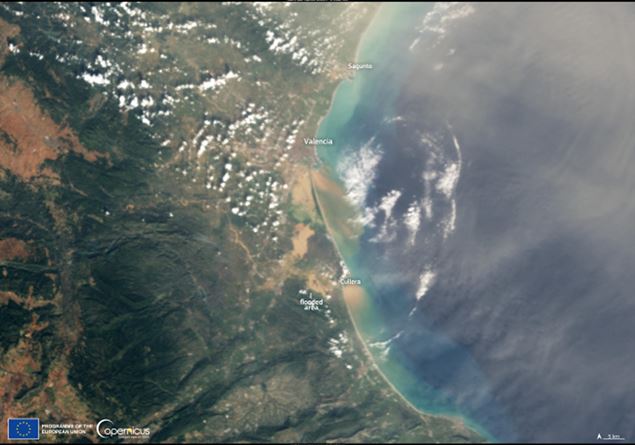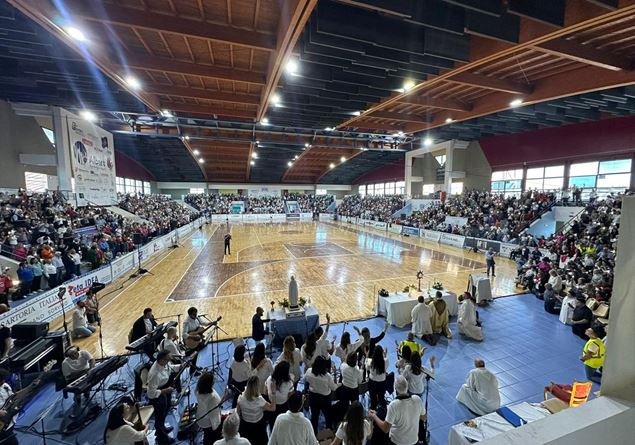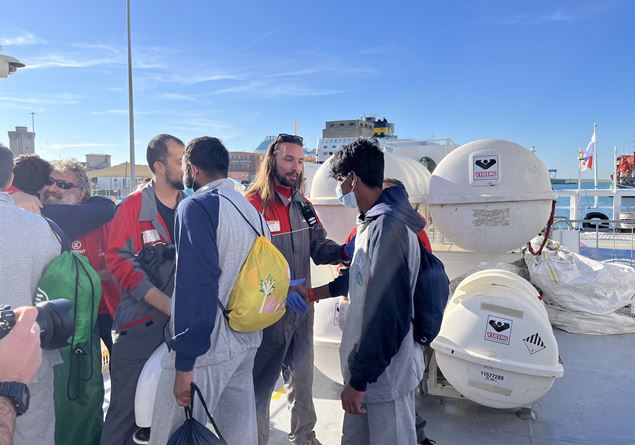
Giulio Boccaletti, 50 years old, scientific director of the Euro-Mediterranean Center on Changes
490 millimeters of water, a year’s worth of rain, fell in just eight hours: in the last hundred years Spain had never seen a flood like the one that hit Valencia in recent days, even if events like this in our continent type are increasingly frequent: in the last 30 years – we read in a resolution of the European Parliament last September – floods in Europe have affected 5.5 million people, causing almost 3,000 victims and over 170 billion euros in economic damage. Extreme phenomena or now “ordinary”? We talk about it with Giulio Boccaletti, scientific director of the Euro-Mediterranean Center on Climate Change, who has been dealing with the climate crisis for years and has recently written two books on the topic: Drought. A country at the climate frontier (Mondadori, 2021) e Water: a biography (Mondadori, 2021).
From Valencia to Barcelona, what’s happening?
«This is nothing new, we have known for years that these extreme phenomena would have intensified. What happened in recent days in Valencia is along the lines of what has already happened in the last year and a half in other parts of the Mediterranean area. The Mediterranean is warming, we are 3-4° above the seasonal average, and we know that every additional degree corresponds to an increase in air humidity of 7%”.
In Valencia, what caused such a violent meteorological phenomenon?
«These are complex situations and phenomena, simplifying we can say that everything was born because there is a lot of water in the atmosphere. When the columns of warm air, saturated with water, meet a front of cold air, as in autumn, the humidity reaches the condensation point and violent thunderstorms are unleashed. In Valencia, 490 millimeters of water fell, a year’s worth of rain, in just eight hours. Be careful though, the quantity of water itself is not indicative, in Italy for example 1,000 millimeters of water falls on average per year, the damage has been enormous because the area is typically arid and the environment is completely engineered: it is not the rain determines the flood as much as the territory”.
Can you elaborate on the concept?
«In Valencia, as in many other European cities, the river had been diverted to save the cities, sizing the embankments based on statistics and surveys which are now outdated. With such intense rainfall, the rivers need outlet areas to avoid flooding the entire urban fabric.”
Where do we start again, to avoid further tragedies?
«I would reflect on three horizons. Starting from the short term, let’s think about how important the alert system is and, on the part of citizens, knowledge of the risks. In the medium term, let’s keep in mind that water is incompressible, there is no total guarantee of safety: it is necessary to plan areas where the rivers can vent while limiting the damage. In the long term, it is essential to rethink the territory, re-engineering it with the future in mind.”
In practice, what does this mean?
«We must not ask ourselves how much to raise the banks but imagine what the country will need in the coming decades, as we did in Italy at the beginning of the twentieth century. Water is the expression of the climate in the area, our great-great-grandparents – exposed to floods – opted to confine it to the banks, imagining an urbanized territory. But the system has been outdated for 30 years now: water is knocking on our doors again, politics must decide “where to go””.
The Derna flood, last year in Lebanon, and then those of a few weeks ago in Poland, the Czech Republic and Emilia-Romagna… Can we still talk about exceptional events or is this now meteorological “normality”?
«The statistical change is known: events that in the historical series were defined as exceptional can now no longer be defined as such because they are repeated with greater frequency. Even in the case of Valencia, we knew that the cyclone would arrive.”
Which areas are most at risk?
«In the Mediterranean area the risk is pervasive. However, I would focus attention on the most vulnerable countries: it is not the geophysical differences but rather the infrastructures and their neglect that make the difference in terms of damage and victims. On the European coasts there are many waterways close to the mountains, even short ones, that can suddenly swell.”









